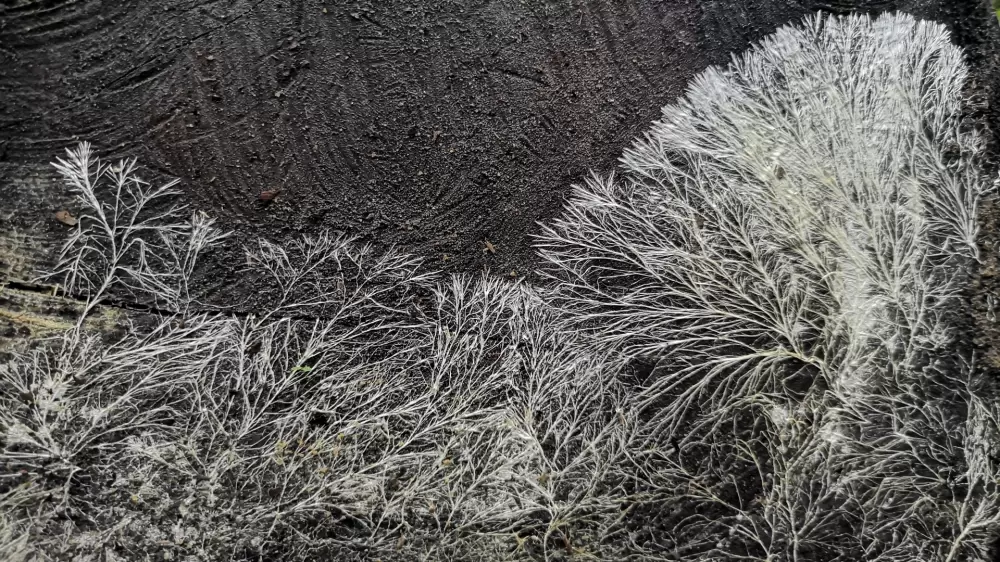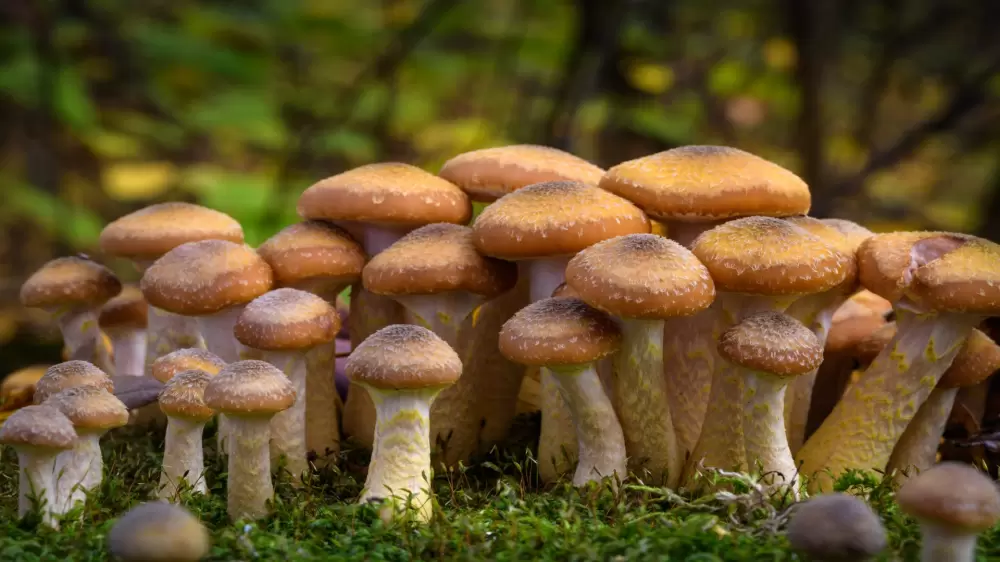THE BIGGEST LIVING ORGANISM ON EARTH: THE HONEY AGAIN

The largest living organism on Earth, what could it be? The answer will most likely surprise you. We are not talking about the 30 meter long blue whale here, but about a fungus. Yes, you read that right, a fungus. More precisely, it concerns the so-called honey fungus, whose mycelium is as large as 1665 football fields! It may not look as spectacular as the blue whale, but this largest living organism on earth is certainly special. The Honey Mushroom is not a psychedelic mushroom.
What is mycelium?
‘The world's largest living organism consists of a mycelium from an area that covers some 965 hectares. A mycelium is a network of fungal threads, also called hyphae. These wires often grow underground, but can also grow in, for example, a rotten tree trunk. A single mycelia can grow into a mycelium and occupy an area of thousands of hectares.
Fruit bodies, such as mushrooms, grow from the mycelium above the ground. You can see the mycelium as the roots of the plant and the mushroom as the fruit. The mycelium of a fungus can become enormous. The largest fungus in the world is the Armillaria, also better known as the Honey fungus or Honey fungus.
Do you want to know more about what a mycelium is and what function it has? In another article, we'll tell you all about the mycelium network.

Largest living organism on Earth
The largest living organism on Earth is 965 hectares and weighs a whopping 544 tons. We are talking here about the Armillaria, or the honey fungus. The mycelium of the fungus has the largest surface area in the world among living organisms. The fungus lives under the Blue Mountains in Oregon (United States). The fungus occupies about 10 square kilometers. This makes it the largest living organism in the world!
Discovery of the honey fungus
In 1992, the researchers first discovered the enormous size of the Armillaria. Two huge specimens were discovered: one living in Michigan 1,500 years old, and one living in Washington, 600 acres in size. The researchers couldn't believe their eyes when they found a fungus that was several times larger in the Oregon forest in 1998.
The discovery of the largest fungus in the world was a slightly less fun story. At the time, so many trees were dying in the Oregon forest that an investigation was carried out to determine the cause. What turned out? The trees were almost all infected with the honey fungus. The study also found that the fungus covered an area of nearly 10 square kilometers and is between 2400 and, 8650 years old.
Discussion
The discovery of the largest Honey fungus in the world, however, sparked some discussion. For when can something be called an individual organism? There was no clear answer to this. Ultimately, an individual organism was seen as a group of genetically identical cells that communicate with each other and share a common goal. The Oregon honey mushroom met these requirements and became the largest living organism on Earth!
Nightmare of the gardener
The honey fungus is also known as the ‘garden's nightmare’ named. Although there are fungi that are more benign than others, most honey fungi kill all kinds of trees. They sometimes literally leave a trail of destruction in forests. The fungi colonize the plants or trees first and once the fungus has colonized the plant, it attacks the roots. Then the roots die and rot.
You can see the mushroom of the Armillaria fungus growing around these affected plants or trees. The Honey fungus can spread its spores through these mushrooms. These mushrooms are yellow-brown and often grow in groups above the ground. They owe the name Honey fungus or Honey mushroom to their colour. Underground, the organism consists of a network of fungal threads that locate new food sources. Together they form the mycelium that can be enormous, like the fungus in Oregon. A fungus that is very special on the one hand because of the size of its mycelium, but what a nightmare it is for some plants and trees. It is within the psychedelic mushroom mycelium where the magical psilocybin truffle growing.

















